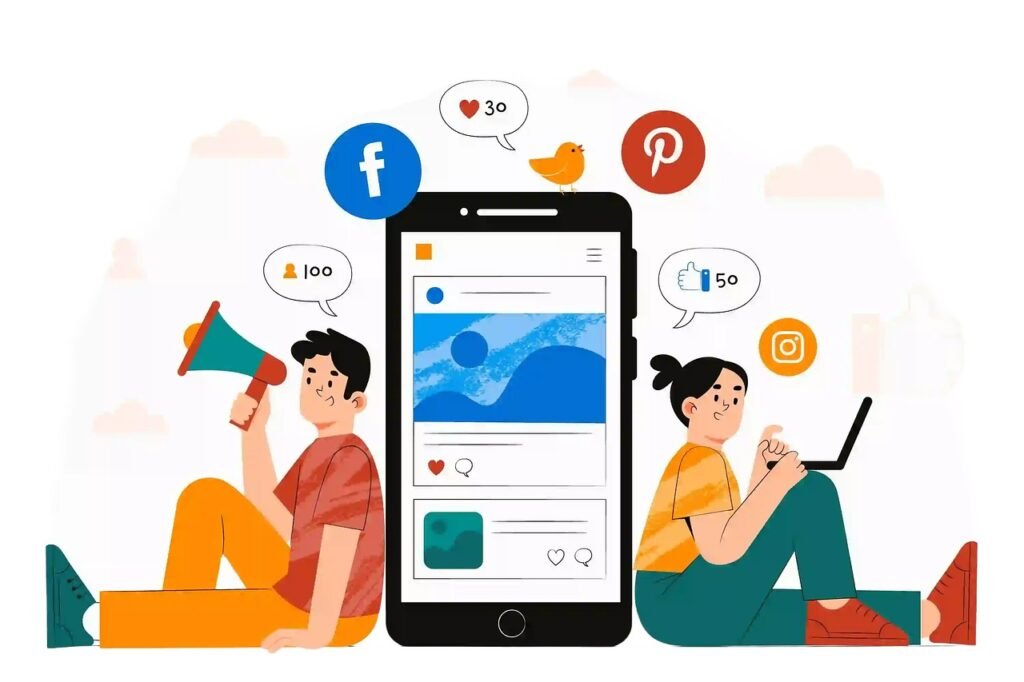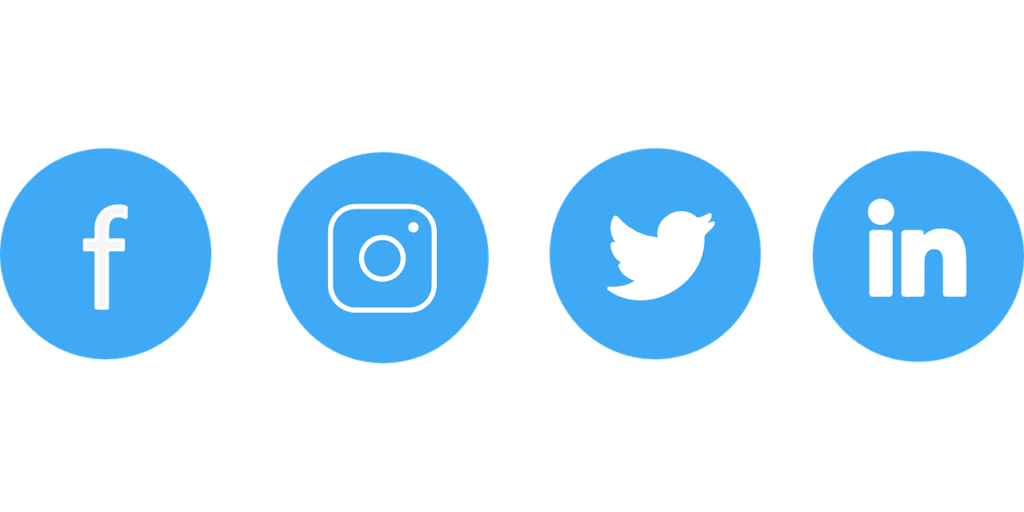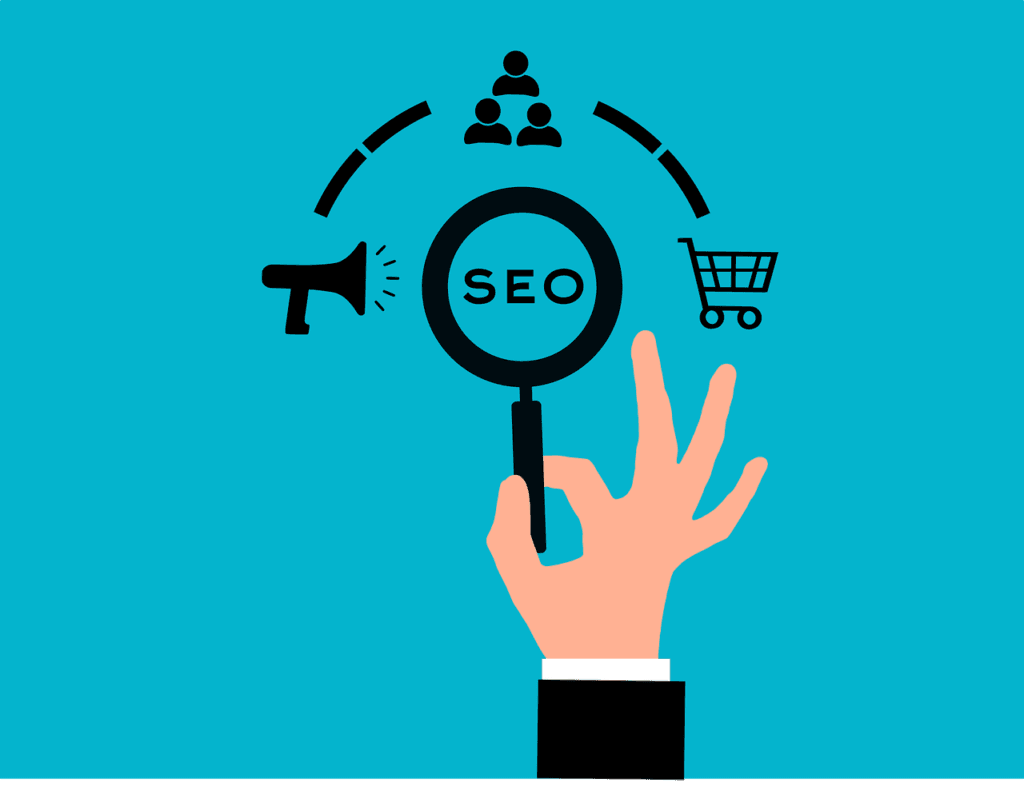- 1. How Many People Use Social Media Worldwide?
- 2. Why Do Social Media Browsers Use These Platforms?
- 3. How Has Social Media Affected Industry Competition?
- 4. How Popular Is Instagram for Businesses?
- 5. How Effective Are Facebook Ads?
- 6. Why Is LinkedIn Important for B2B Marketing?
- 7. How Engaged Are Instagram Users with Business Accounts?
- 8. How Much Will Social Media Ad Spend Increase by 2024?
- 9. Why Is Video Content Essential for Social Media?
- 10. What Is the Future of Influencer Marketing?
- 11. How Active Is Twitter in 2024?
- 12. How Does Pinterest Drive Referral Traffic?
- 13. How Rapidly Is TikTok Growing?
- 14. Why Is Customer Engagement Important on Social Media?
- 15. How Effective Are Live Videos on Facebook?
- 16. How Popular Are Stories on Instagram and Facebook?
- 17. How Effective Is LinkedIn InMail Compared to Email?
- 18. How Many Social Media Messages to Brands Go Unanswered?
- 19. Why Do Consumers Follow Brands on Social Media?
- 20. How Much Time Do Social Media Users Spend on Platforms Daily?
- 21. How Effective Is LinkedIn for Customer Acquisition?
- 22. How Does Snapchat Reach Younger Audiences?
- 23. How Popular Is YouTube?
- 24. How Does User-Generated Content Impact Conversion Rates?
- 25. How Does Gen Z Use Social Media for Product Discovery?
- 26. What Is the Projected U.S. Social Media Advertising Revenue for 2024?
- 27. How Big Will the Influencer Marketing Industry Be by 2024?
- 28. How Trusted Are Influencer Recommendations?
- 29. How Do Digital Consumers Use Social Media for Brand Research?
- 30. How Critical Will Social Media Marketing Be in 2024?
- We got all the latest Marketing Stats here:
Social media marketing has become an essential part of any business strategy. With billions of people using social media platforms daily, understanding the key statistics and trends is crucial for marketers looking to stay ahead of the curve. This guide explores the most important social media marketing statistics for 2024, providing actionable insights to enhance your marketing efforts.
1. How Many People Use Social Media Worldwide?

Over 3.96 billion people use social media worldwide. This vast number highlights the immense reach and potential of social media platforms. With nearly half of the world’s population engaged on social media, businesses have a tremendous opportunity to connect with their audience, build brand awareness, and drive sales.
Understanding the demographics and preferences of your target audience on different platforms can help you tailor your content and strategies to maximize engagement and conversion rates. By leveraging the power of social media, you can reach a global audience and grow your business effectively.
2. Why Do Social Media Browsers Use These Platforms?
54% of social browsers use social media to research products. This statistic shows the growing trend of consumers turning to social media to discover new products and make purchasing decisions. Social media platforms offer a unique blend of user-generated content, reviews, and influencer recommendations that can influence buying behavior.
For businesses, this means that having a strong social media presence is essential. By showcasing your products, engaging with customers, and leveraging social proof, you can attract potential buyers and build trust in your brand. Make sure to optimize your social media profiles and provide valuable content that addresses the needs and interests of your audience.
3. How Has Social Media Affected Industry Competition?
93% of marketers say social media has accelerated competition in their industry. The widespread adoption of social media has leveled the playing field, allowing businesses of all sizes to compete for attention and customers. This increased competition means that marketers need to be more strategic and innovative to stand out.
To stay ahead, focus on creating high-quality, engaging content that resonates with your audience. Utilize data and analytics to understand what works and continually refine your strategies. Additionally, consider investing in social media advertising to reach a larger audience and drive more targeted traffic to your website.
4. How Popular Is Instagram for Businesses?
Instagram has over 1.3 billion monthly active users. This platform is particularly popular among younger demographics, making it a valuable channel for businesses targeting millennials and Gen Z. Instagram’s visual nature and features like Stories, Reels, and shopping tags provide unique opportunities for brands to showcase their products and engage with their audience.
To leverage Instagram effectively, create visually appealing content that aligns with your brand identity. Use hashtags strategically to increase visibility and reach. Engage with your followers by responding to comments and messages, and consider collaborating with influencers to amplify your reach.
5. How Effective Are Facebook Ads?
Facebook ads reach 2.14 billion people, or 72.5% of its total 2.91 billion monthly active users. This extensive reach makes Facebook advertising a powerful tool for businesses looking to increase brand awareness and drive sales. With advanced targeting options, you can reach specific demographics, interests, and behaviors, ensuring that your ads are seen by the right people.
To maximize the effectiveness of your Facebook ads, create compelling ad copy and visuals that capture attention. Test different ad formats and placements to see what works best for your audience. Regularly monitor and analyze your ad performance to optimize your campaigns and achieve better results.
6. Why Is LinkedIn Important for B2B Marketing?
LinkedIn generates 80% of B2B leads from social media. This statistic underscores the importance of LinkedIn for businesses targeting other businesses. LinkedIn’s professional environment and networking capabilities make it an ideal platform for B2B marketers to connect with decision-makers and generate high-quality leads.
To succeed on LinkedIn, optimize your company profile and showcase your expertise through valuable content. Participate in relevant groups and discussions to build relationships and establish credibility. Use LinkedIn’s advertising options, such as Sponsored Content and InMail, to reach a targeted audience and drive conversions.
7. How Engaged Are Instagram Users with Business Accounts?
90% of Instagram users follow at least one business account. This high engagement level indicates that users are interested in connecting with brands on Instagram. By following business accounts, users can stay updated on new products, promotions, and company news.
To capitalize on this engagement, ensure that your Instagram profile is complete and visually appealing. Post regularly and use features like Stories and Reels to keep your audience engaged. Encourage user-generated content by creating branded hashtags and running contests or giveaways.
8. How Much Will Social Media Ad Spend Increase by 2024?
Social media ad spend is projected to reach $229.6 billion by 2024. This significant increase reflects the growing importance of social media advertising in digital marketing strategies. As more businesses invest in social media ads, competition for ad space will intensify, making it crucial to optimize your campaigns for maximum ROI.
To stay competitive, focus on creating high-quality, targeted ads that resonate with your audience. Use advanced targeting options to reach specific demographics and interests. Regularly analyze your ad performance and make data-driven adjustments to improve results.
9. Why Is Video Content Essential for Social Media?
Video content is 40 times more likely to be shared on social media than other types of content. This high shareability makes video a powerful tool for increasing reach and engagement. Videos can convey information quickly and effectively, making them ideal for capturing attention and driving action.
To leverage video content, create engaging, high-quality videos that align with your brand message. Use a mix of formats, such as live videos, tutorials, behind-the-scenes footage, and customer testimonials. Optimize your videos for each platform and encourage viewers to share and comment.
10. What Is the Future of Influencer Marketing?

79% of marketers plan to continue investing in influencer marketing in 2024. Influencer marketing has proven to be an effective way to reach and engage with target audiences. By partnering with influencers, brands can leverage their credibility and reach to promote products and build brand awareness.
To succeed with influencer marketing, choose influencers who align with your brand values and have a genuine connection with their audience. Collaborate on creative campaigns that provide value to both the influencer and their followers. Track the performance of your influencer partnerships to ensure they deliver the desired results.
11. How Active Is Twitter in 2024?
Twitter has over 353 million monthly active users. This platform remains a key player in the social media landscape, known for real-time updates and engagement. Twitter’s fast-paced environment makes it ideal for sharing news, updates, and engaging in conversations with your audience.
To maximize your presence on Twitter, tweet regularly and engage with your followers. Use hashtags to increase visibility and participate in trending discussions. Twitter Ads can also help you reach a broader audience and drive traffic to your website.
12. How Does Pinterest Drive Referral Traffic?
Pinterest drives 33% more referral traffic to shopping sites than Facebook. This statistic highlights Pinterest’s effectiveness in driving traffic to e-commerce sites. Pinterest users often use the platform to discover and save products they intend to purchase, making it a valuable channel for businesses looking to drive sales.
To leverage Pinterest for your business, create visually appealing pins that showcase your products. Optimize your pins with relevant keywords and descriptions to increase visibility. Use Pinterest’s advertising options, such as Promoted Pins, to reach a larger audience and drive more traffic to your site.
13. How Rapidly Is TikTok Growing?
TikTok is expected to reach 1.5 billion users by 2024. TikTok’s explosive growth has made it one of the most popular social media platforms, especially among younger demographics. The platform’s short-form video content and algorithm-driven feed offer unique opportunities for brands to reach and engage with a massive audience.
To succeed on TikTok, create authentic, entertaining content that resonates with your target audience. Participate in trending challenges and use popular music and effects to increase engagement. Collaborate with TikTok influencers to amplify your reach and build brand awareness.
14. Why Is Customer Engagement Important on Social Media?
Brands see a 20% increase in engagement when they respond to customers on social media. Engaging with your audience on social media can significantly enhance customer satisfaction and loyalty. By responding to comments, messages, and mentions, you show that you value your customers and are attentive to their needs.
To improve customer engagement, monitor your social media accounts regularly and respond promptly to interactions. Use a friendly and professional tone, and address customer inquiries or issues thoroughly. Engaging with your audience can help build a positive brand image and foster long-term relationships.
15. How Effective Are Live Videos on Facebook?
Live videos generate 6 times more interactions than regular videos on Facebook. This high level of engagement makes live video a powerful tool for connecting with your audience in real time. Live videos allow you to showcase products, host Q&A sessions, and provide behind-the-scenes content, creating an interactive and engaging experience for viewers.
To make the most of Facebook Live, promote your live sessions in advance to build anticipation. During the live broadcast, engage with viewers by responding to comments and questions. After the broadcast, analyze the performance to understand what worked and how you can improve future live videos.

16. How Popular Are Stories on Instagram and Facebook?
Stories on Instagram and Facebook are viewed by 500 million users every day. Stories provide a unique way to share ephemeral content that disappears after 24 hours. This format encourages users to engage with content more frequently, making it a valuable tool for keeping your audience engaged.
To leverage Stories, post regularly and use interactive features like polls, quizzes, and questions to encourage engagement. Highlight important Stories on your profile to extend their lifespan. Use Stories to showcase new products, share behind-the-scenes content, and connect with your audience on a personal level.
17. How Effective Is LinkedIn InMail Compared to Email?
LinkedIn’s InMail has a 300% higher response rate than email. This impressive response rate highlights the effectiveness of LinkedIn’s direct messaging feature for reaching out to potential leads and business contacts. InMail allows you to send personalized messages to LinkedIn members even if you’re not connected, making it a powerful tool for B2B marketing.
To make the most of InMail, craft personalized and relevant messages that address the recipient’s needs and interests. Keep your messages concise and include a clear call to action. Monitor your InMail campaigns to track performance and refine your approach.
18. How Many Social Media Messages to Brands Go Unanswered?
89% of social media messages to brands go unanswered. This high percentage indicates a significant missed opportunity for businesses to engage with their audience and address customer inquiries or issues. Responding to social media messages can improve customer satisfaction and build a positive brand image.
To improve your response rate, implement a system for monitoring and managing social media messages. Assign team members to handle customer inquiries and ensure they respond promptly and professionally. Engaging with your audience on social media can help build trust and loyalty.
19. Why Do Consumers Follow Brands on Social Media?
50% of consumers say they follow brands on social media to learn about new products or services. This statistic underscores the importance of using social media to keep your audience informed about your latest offerings. By sharing product updates, promotions, and company news, you can keep your followers engaged and encourage them to make purchases.
To effectively communicate with your audience, create a content calendar that includes regular updates about your products and services. Use a mix of content formats, such as images, videos, and Stories, to keep your posts interesting and engaging. Encourage your followers to share their experiences with your products to generate user-generated content.
20. How Much Time Do Social Media Users Spend on Platforms Daily?

Social media users spend an average of 2 hours and 25 minutes per day on social platforms. This significant amount of time presents a valuable opportunity for businesses to engage with their audience. By creating compelling content and interacting with users, you can capture their attention and drive engagement.
To make the most of this opportunity, post regularly and at times when your audience is most active. Use analytics tools to track the performance of your posts and understand what types of content resonate with your audience. Engage with users through comments, messages, and interactive content to build a strong online presence.
21. How Effective Is LinkedIn for Customer Acquisition?
85% of businesses using LinkedIn for marketing have acquired at least one customer. This high success rate highlights the effectiveness of LinkedIn as a platform for B2B marketing. LinkedIn’s professional network environment makes it an ideal place to connect with potential clients, partners, and industry leaders.
To maximize customer acquisition on LinkedIn, ensure your company profile is complete and showcases your expertise. Share valuable content that addresses the pain points of your target audience. Engage with your network by participating in groups, commenting on posts, and using LinkedIn’s advertising options to reach a broader audience.
22. How Does Snapchat Reach Younger Audiences?
Snapchat reaches 75% of all 13-34 year-olds in the U.S. This statistic underscores Snapchat’s popularity among younger demographics, making it a valuable platform for businesses targeting this age group. Snapchat’s unique features, such as Stories and lenses, offer creative ways to engage with users.
To leverage Snapchat, create fun and interactive content that resonates with younger audiences. Use features like filters, lenses, and geotags to enhance your content. Consider running Snapchat Ads to reach a larger audience and drive engagement with your brand.
23. How Popular Is YouTube?
YouTube has over 2.6 billion monthly active users. This immense user base makes YouTube a key platform for video marketing. YouTube’s diverse audience and extensive reach provide ample opportunities for businesses to connect with potential customers through engaging video content.
To succeed on YouTube, create high-quality videos that provide value to your audience. Optimize your video titles, descriptions, and tags with relevant keywords to increase visibility. Engage with viewers by responding to comments and encourage them to subscribe to your channel for more content.
24. How Does User-Generated Content Impact Conversion Rates?
User-generated content has a 4.5% higher conversion rate than brand-created content. This statistic highlights the power of user-generated content (UGC) in driving sales. UGC, such as customer reviews, testimonials, and social media posts, provides authentic and relatable content that can influence purchasing decisions.
To encourage UGC, create campaigns that invite customers to share their experiences with your products. Feature user-generated content on your social media profiles and website to build trust and credibility. UGC can also provide valuable social proof, enhancing your brand’s reputation and increasing conversions.
25. How Does Gen Z Use Social Media for Product Discovery?
85% of Gen Z uses social media to learn about new products. This generation, known for its tech-savviness, relies heavily on social media for product discovery and recommendations. Platforms like Instagram, TikTok, and Snapchat are particularly popular among Gen Z for exploring new brands and products.
To reach Gen Z, create engaging and visually appealing content that captures their attention. Leverage influencers and user-generated content to build trust and authenticity. Use interactive features like polls, quizzes, and challenges to engage with Gen Z and encourage them to share their experiences with your brand.
26. What Is the Projected U.S. Social Media Advertising Revenue for 2024?

Social media advertising revenue in the U.S. is expected to exceed $56 billion in 2024. This projection highlights the growing investment in social media advertising as businesses recognize its effectiveness in reaching and engaging audiences. With advanced targeting options and measurable results, social media ads are becoming an integral part of marketing strategies.
To make the most of your social media advertising budget, create compelling ad content that resonates with your target audience. Use data and analytics to optimize your campaigns and measure their effectiveness. Continuously refine your strategies based on performance metrics to achieve the best results.
27. How Big Will the Influencer Marketing Industry Be by 2024?
Influencer marketing is projected to be a $15 billion industry by 2024. This growth reflects the increasing reliance on influencers to reach and engage target audiences. Influencers can provide authentic endorsements and create content that resonates with their followers, making them valuable partners for brands.
To succeed with influencer marketing, choose influencers whose values align with your brand. Collaborate on creative campaigns that provide value to both the influencer and their audience. Track the performance of your influencer partnerships to ensure they deliver the desired results and adjust your strategies accordingly.
28. How Trusted Are Influencer Recommendations?
61% of consumers say they trust influencer recommendations. This trust highlights the effectiveness of influencers in shaping consumer behavior and driving sales. Influencers can provide authentic and relatable endorsements that resonate with their followers, making them powerful advocates for your brand.
To leverage influencer recommendations, partner with influencers who have a genuine connection with your target audience. Encourage them to share honest reviews and experiences with your products. Authenticity is key to building trust and driving conversions through influencer marketing.
29. How Do Digital Consumers Use Social Media for Brand Research?
Nearly 40% of digital consumers use social networks to research new brands or products. This behavior underscores the importance of having a strong social media presence. Consumers often turn to social media to learn about new products, read reviews, and compare options before making a purchase.
To optimize your social media profiles for brand research, provide detailed information about your products and services. Share customer reviews and testimonials to build credibility. Use high-quality visuals and engaging content to showcase your offerings and attract potential customers.
30. How Critical Will Social Media Marketing Be in 2024?
70% of marketers believe social media marketing efforts will be more critical in 2024. This belief reflects the growing importance of social media in overall marketing strategies. As social media platforms continue to evolve and introduce new features, businesses need to stay ahead of the curve to effectively engage their audience and drive results.
To prepare for the future of social media marketing, stay updated on the latest trends and best practices. Invest in advanced analytics tools to measure the effectiveness of your campaigns. Continuously experiment with new content formats and strategies to keep your audience engaged and achieve your marketing goals.
We got all the latest Marketing Stats here:
Read next






















Comments are closed.